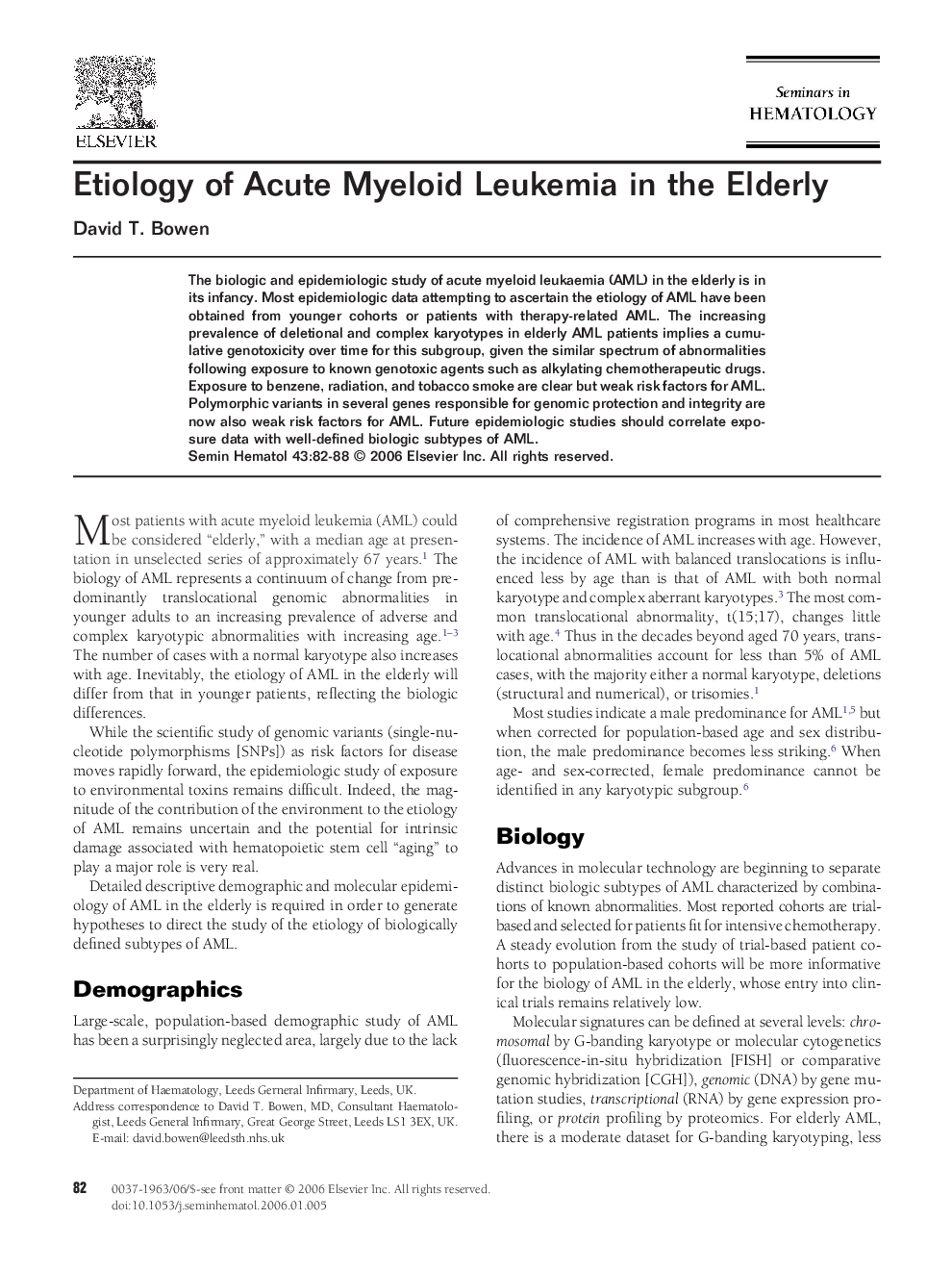| Article ID | Journal | Published Year | Pages | File Type |
|---|---|---|---|---|
| 3334139 | Seminars in Hematology | 2006 | 7 Pages |
Abstract
The biologic and epidemiologic study of acute myeloid leukaemia (AML) in the elderly is in its infancy. Most epidemiologic data attempting to ascertain the etiology of AML have been obtained from younger cohorts or patients with therapy-related AML. The increasing prevalence of deletional and complex karyotypes in elderly AML patients implies a cumulative genotoxicity over time for this subgroup, given the similar spectrum of abnormalities following exposure to known genotoxic agents such as alkylating chemotherapeutic drugs. Exposure to benzene, radiation, and tobacco smoke are clear but weak risk factors for AML. Polymorphic variants in several genes responsible for genomic protection and integrity are now also weak risk factors for AML. Future epidemiologic studies should correlate exposure data with well-defined biologic subtypes of AML.
Related Topics
Health Sciences
Medicine and Dentistry
Hematology
Authors
David T. Bowen,
